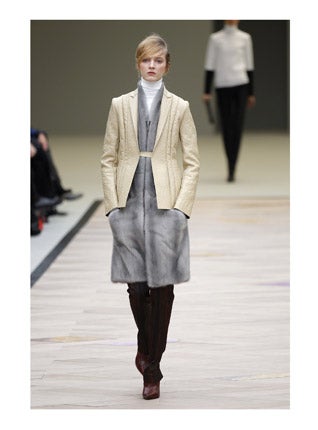Ready To Wear: There was a time when any publicity was good publicity

In London last month, Tom Ford caused an outcry when he refused to invite newspaper journalists to his autumn/winter ready-to-wear presentation.
He was only working with magazines with a long lead time, he said; those with shorter deadlines would be invited to view his work at a later date. In Paris last week, meanwhile, Céline, currently among the most fêted labels, advised that the house "no longer allows any images to be taken at the catwalk show, posted online or published in any form – except official catwalk shots. The same applies at showroom appointments. Catwalk images will be available as soon as possible after the show."
For the past decade there have been times when it seemed that any publicity was good publicity – the more of it, the better, however raw-edged and/or inexperienced a commentator might be and whatever the quality and angle of images shown alongside. That may be changing. Both Ford and Phoebe Philo (the designer at Céline) are aware that not only is there something to be said for the right publicity, over and above more widespread communication, but also – and this applies to showroom appointments in particular – when the clothes are seen up close, any copycats can photograph, then plagiarise them. This happens anyway, but for the creator of the original article to hand every last detail to them on a plate is foolhardy, surely.
Time was, only accredited photographers could supply images to illustrate any fashion feature – and that applied right across the press. Now, within seconds of a show starting, pictures are blogged and tweeted all over the world. It's all part of a wider move to democratise fashion which, increasingly, and within the designer fashion industry at least, has its detractors. A certain amount of image management is to be gained by a brand live-streaming its own show, say, as opposed to simply letting the audience do so for them, but more elitist names – and Tom Ford and Céline both occupy this territory – would rather pull back. It's easy to see why. Given the economic climate, the last thing any designer name needs is to facilitate counterfeiting, and there's a fine line between global recognition and overexposure, which can never be a good thing.
Join our commenting forum
Join thought-provoking conversations, follow other Independent readers and see their replies
Comments
Bookmark popover
Removed from bookmarks